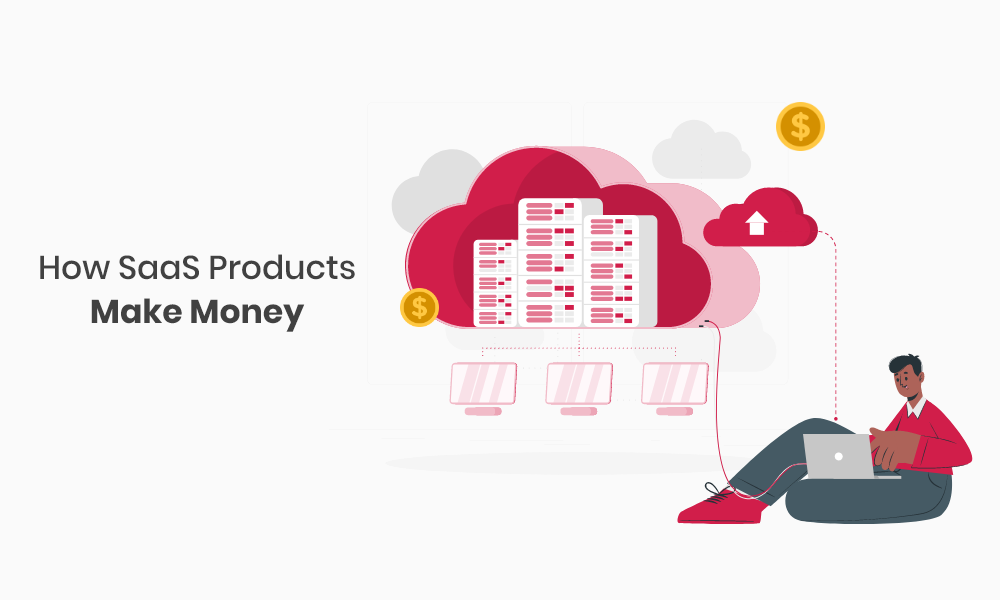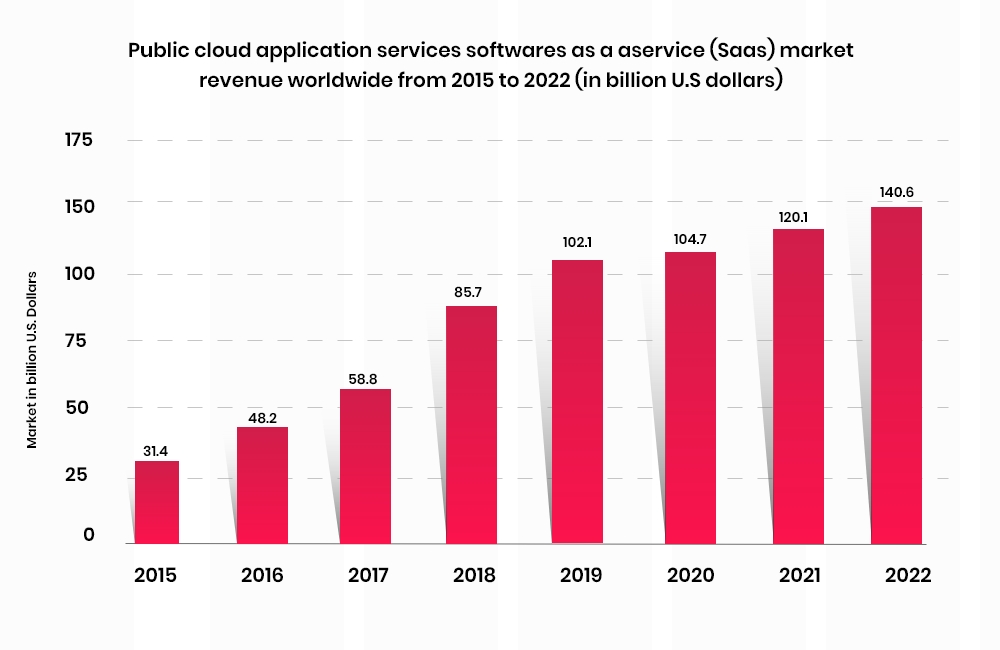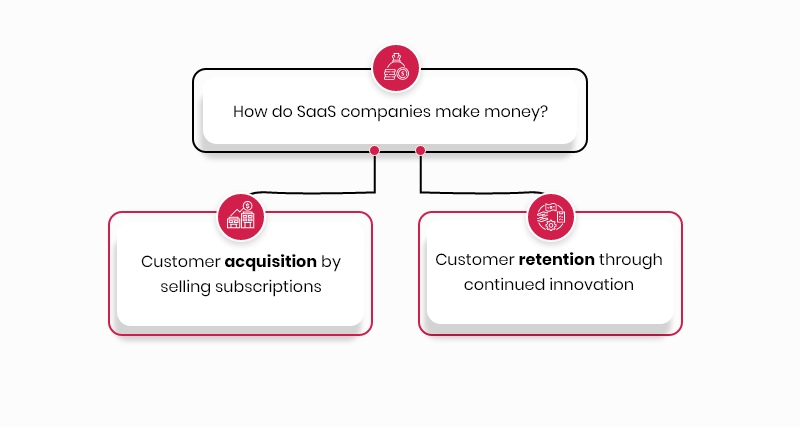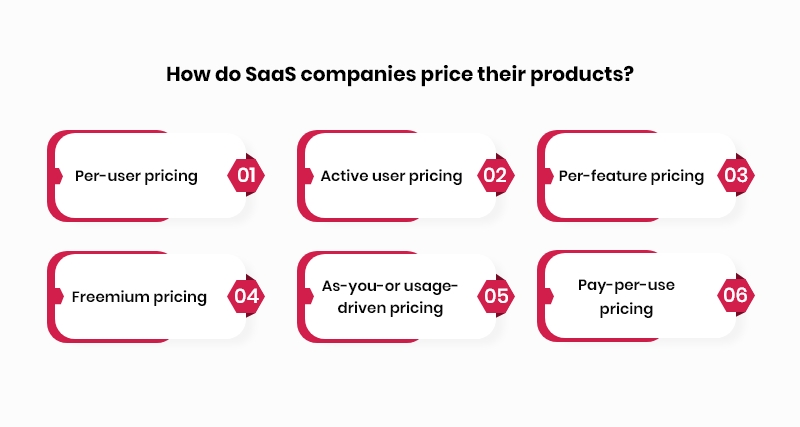I first used a SaaS product without even knowing it! I was an intern in a software company and visited one of our clients with my project manager. When I got back, I entered all my expense receipts (travel, food and other expenses) into a software called Concur. As an intern, I focused on my day out, but as our company started to develop its first SaaS application, it dawned on me that Concur was actually the first SaaS tool I ever used—and the first SaaS application in the world! Today, over 70% of all applications used by companies are SaaS-based—making them essential for business growth and agility.
Since then, I have used many SaaS solutions and been a part of teams building SaaS software. SaaS is no longer just a buzzword—it is how businesses of today drive productivity, business growth and improve their bottom line—without having to invest in additional hardware or spend time installing new software. SaaS has helped developers, writers, product managers, doctors, world leaders, and nearly everyone in the world have one less thing to worry about and has grown into a $145b industry showcasing nearly 5x growth between 2015-2021 alone!
What is SaaS?
SaaS—or Software as a Service is cloud-hosted software accessible from anywhere at any time. Most customers access SaaS products through thin clients such as browsers (such as Google Docs, Microsoft Office 365, Zoom, Google Meet, Gmail) or a dedicated or “thick” client such as Adobe Suite and Microsoft teams. SaaS today is considered an umbrella term that includes PaaS or Platform as a Service, IaaS or Infrastructure as a Service and SaaS or Software as a Service.
Software as a service allows users to purchase as a subscription or on a pay-as-you-go basis. All the underlying hardware, software and data are located at the provider’s data centre. The SaaS software provider is responsible for the availability of this service and the associated data. Companies benefit from having reduced IT overheads and enhanced agility that is unmatched by traditional installable software.
Many of us use SaaS software without even realizing it. Notable examples of SaaS products include the Adobe products suite, Microsoft Office 365, Salesforce, HR software such as BambooHR, Google Docs, Slack, ClickUp, Microsoft Teams, Zoom, Zoho, Netflix, YouTube, FireTV—and so on! SaaS is the driver of the connected revolution, helping people be productive from anywhere in the world!
According to a report from BetterCloud, large organizations with 1000+ employees use over 150 SaaS applications every day! Such is the popularity of the SaaS revolution that annual contract values for SaaS software have grown by five times in the last six years alone! In developing countries such as India, the SaaS industry grew over 75% over the previous two years, generating over $3.5b in 2020.
What are the benefits of using SaaS products for customers?
SaaS products are exceedingly popular today and offer a host of benefits that include:
- Reduced IT overheads
As companies do not have to invest in expensive hardware and software maintenance or installation costs, IT overhead costs reduce dramatically.
- Improved scalability
All companies need to do to scale is to purchase additional storage space, compute time, or licenses. This makes scaling a breeze as there are no expensive servers to purchase, no additional software to be installed—everything is managed by the SaaS provider.
- Enhanced accessibility
Work from anywhere is best using cloud-based or SaaS solutions. As most SaaS products only require a web browser, your office is where you are!
- Freedom from licensing issues
As your SaaS provider will always provide you with the most updated version of the software, you do not have to worry about paying for upgrades and newer versions of the software along with additional licenses, if needed.
- Cost savings
SaaS software offers substantial cost savings over traditional software. There are no individual licenses to purchase, and as it is a subscription-driven model, licenses are not perpetual, reducing costs involved in upfront perpetual license purchases. Additionally, as SaaS software offer browser-led access, companies can invest in portable devices instead of high-end computing devices leading to substantial cost savings in the long run.
What are the benefits of adopting a SaaS model for software companies?
- You experience rapid growth due to reduced reliance on physical installations and lower input costs for end-users.
- There are fewer deployment problems as clients access SaaS products through a thin client, and users only access the virtualized interface instead of the actual software.
- Predictable revenue inflows as most customers will opt for longer subscription durations to reduce downtime.
What are the drawbacks of using SaaS products?
SaaS products also come with some drawbacks. These include:
- Outages
Similar to the recent Salesforce or Microsoft outage, SaaS companies may suffer from outages, disrupting services for high-volume customers.
- Security breaches
Security breaches can occur on the most stable SaaS platforms. For example, a data breach recently impacted the professional networking website LinkedIn. Incidents such as this can lead to data loss and potential identity or intellectual property or information theft.
- Performance
Just like regular software, SaaS products can also have throttling issues and suffer from service-wide performance problems or those with specific access clients.
- Reliance on internet connections
If you have an unstable internet connection, you won’t be able to access your SaaS-driven solution even if your internal networks are up and running.
- Limited integration
Companies often have custom software that SaaS products either cannot or find difficulty integrating with. This can cause a steeper learning curve for those using legacy software or limit a company’s transition to the cloud.
What are the drawbacks of adopting a SaaS model for software companies?
Not all is well in the SaaS space. Upcoming or startup SaaS companies can face the following issues:
- Startup costs
It isn’t easy to acquire, maintain, and scale the setup you need to succeed without funding. Costs to acquire a team, the infrastructure and customers are major factors you must consider before venturing into the SaaS world.
- Risk
SaaS companies grow quickly—but can also fail equally quick. Market changes quickly impact SaaS companies and can cause the business to fail if not turned around in time.
- User churn
SaaS solutions are rapidly affected by market competition and economic changes. As users find cheaper or better products, they can quickly shift to other providers, causing a loss in revenue to the SaaS provider.
What is the SaaS business model? How do SaaS companies make money?
Companies sell cloud-based software as a weekly, monthly or annual subscription in a typical SaaS business model. The main motive of every SaaS startup is to gain enough customers so that they can cover their expenses and ensure a steady revenue flow for future growth. Most SaaS companies focus on the following factors to ensure sustainability:
1. Customer acquisition by selling subscriptions
As SaaS customers do not buy a physical product, they must continue to subscribe to the SaaS service to get recurring revenue. The difference between selling a physical product and a service is that monthly recurring revenue is not actual revenue until the subscription period (the month) is over. Until the subscription period is complete, many SaaS companies are liable to cancel the subscription on the customer’s request, making MRR or monthly recurring revenue a liability until realized. This requires SaaS companies to compete fiercely for market share and customer acquisition to offset costs and reach profitability and self-reliance.
2. Customer retention through continued innovation
SaaS companies cannot lay claim to the subscription money until the subscription term is over. They must focus on customer retention by providing innovative solutions that keep them competitive in the market. Companies do this by providing exceptional customer service, easy paths to scalability, reduced downtime and upselling. Existing customers spend more than new customers, increasing their chances of opting for a competitor (user churn).
How do SaaS companies price their products?
SaaS companies follow multiple pricing models to enhance revenue and increase user retention. These pricing models include:
- Per-user pricing
Per-user pricing is the most popular pricing methodology employed by SaaS companies. Customers pay a fixed cost per user to get the features on offer, and the per-user pricing model is often clubbed with other pricing models to get a more favourable and acceptable price point for users.
The benefits of per-user pricing include easier cost calculation for customers and easier revenue prediction for SaaS providers. This model is used by Salesforce, AWS and many others.
- Active user pricing
Active user pricing is a variant of per-user pricing in which you bill the customer for the number of licenses in use. This is especially beneficial for larger companies where employee count can fluctuate over time, making it cost-prohibitive to keep paying for licenses they do not need.
The benefits of active user pricing include substantial savings for companies as they only pay for the number of licenses they use. SaaS companies benefit by using this as a sales strategy—you only pay for what you use. Microsoft team foundation server and other server products use the active user pricing model.
- Per-feature pricing
Per-feature pricing works best for SaaS products with many features that appeal to a broad audience. For example, in SaaS-driven HRIS software, not all companies may want to opt for every module on offer.
These features best suit smaller companies that need specific features in a product and would not want to pay for all the features they don’t need. BambooHR and Salesforce offer great feature-driven product models that allow companies to choose what they need and fit their budgets. SuccessFactors is a good example of a per-feature pricing model.
- Freemium pricing
Both SaaS and traditional software products adopt freemium pricing. Customers can use the free features in the product as long as they want. If they wish to use any of the paid features, they must pay-per-user costs for them.
An excellent example of freemium pricing in SaaS is Grammarly. Grammarly offers spell check and limited grammar checks for its free users and a host of other advanced features for paid users, including advanced grammar checks and plagiarism checks.
- As-you-go or usage-driven pricing
This pricing model is excellent for SaaS companies offering computational products services such as AWS, Microsoft Azure and Google Cloud. As these companies charge according to CPU time and storage or database space, customers only pay for what they use.
- Pay-per-use pricing
This model is best suited to companies that may have fluctuating demand. A good example of pay-per-use pricing is payment gateways. As customers only pay a transaction fee, this SaaS model suits payment gateways and their customers perfectly.
Popular cloud-based payment gateways include Paypal, Stripe, PayTM and Instamojo, amongst others.
Is venturing into the SaaS market worth it?
Absolutely! The SaaS market is growing rapidly and is showing no signs of slowing down. Additionally, both companies and individuals prefer the SaaS model due to reduced upfront costs in hardware and software acquisition, making it an excellent opportunity for any startup with a great SaaS product idea in mind.
Final Thoughts
The SaaS marketplace is full of stories of disruptors and revolutionary ideas that made it big quickly, and this makes SaaS an exceedingly interesting place to be. As the world increases SaaS adoption rates, the time is ripe for an innovative startup to shake up its niche with a ground-breaking SaaS product. All you need is an innovative and experienced development partner such as Volumetree, funding, a great idea to top it all and you’re golden!
Have you got an innovative SaaS idea in mind? Let’s schedule a free 15-minute call to see how we can help you create a truly revolutionary product!








zithromax for sale online: zithromax 250 mg tablet price – zithromax generic cost
https://doxycyclinea.online/# buy doxycycline online uk
generic amoxicillin over the counter: where can i buy amoxicillin online – amoxicillin buy no prescription
buy amoxil [url=https://amoxila.pro/#]buy amoxicillin over the counter uk[/url] buy amoxil
https://zithromaxa.store/# zithromax buy online no prescription
neurontin discount: buy neurontin online no prescription – neurontin without prescription
prednisone 60 mg: online prednisone 5mg – prednisone 5 50mg tablet price
25 mg prednisone [url=https://prednisoned.online/#]buy prednisone tablets online[/url] prednisone 1 mg daily
neurontin tablets no script: buying neurontin online – neurontin cost in canada
https://zithromaxa.store/# azithromycin zithromax
Thank you a lot for sharing this with all of us you really know what you are speaking approximately! Bookmarked. Kindly also consult with my web site =). We may have a hyperlink trade contract between us!
where to buy prednisone in australia: prednisone ordering online – prednisone 10 mg tablets
buying prednisone mexico [url=https://prednisoned.online/#]otc prednisone cream[/url] prednisone tablets canada
https://zithromaxa.store/# zithromax 500 without prescription
zithromax capsules: zithromax tablets for sale – cheap zithromax pills
how to get zithromax [url=https://zithromaxa.store/#]generic zithromax over the counter[/url] zithromax purchase online
I found your link through an online forum – my lucky day. Your site is exactly what i was looking for!
https://zithromaxa.store/# buy zithromax 1000mg online
neurontin prescription: neurontin 200 mg tablets – how much is neurontin
doxycycline without a prescription: buy cheap doxycycline – buy doxycycline hyclate 100mg without a rx
zithromax price canada: cheap zithromax pills – buy zithromax online
how to get zithromax [url=https://zithromaxa.store/#]zithromax antibiotic[/url] zithromax cost uk
https://amoxila.pro/# purchase amoxicillin 500 mg
prednisone 5 tablets: prednisone buying – 5 prednisone in mexico
neurontin 600 [url=https://gabapentinneurontin.pro/#]canada where to buy neurontin[/url] neurontin 100mg tab
Today, while I was at work, my sister stole my apple ipad and tested to see if it can survive a twenty five foot drop, just so she can be a youtube sensation. My apple ipad is now destroyed and she has 83 views. I know this is entirely off topic but I had to share it with someone!
https://doxycyclinea.online/# buy cheap doxycycline online
Really Interested site this is.. I really Enjoy a lot reading your Blog.. I will Bookmark your site for more reference.
prednisone 10mg canada: cost of prednisone in canada – generic prednisone otc
amoxicillin price without insurance: amoxicillin without prescription – antibiotic amoxicillin
buy zithromax no prescription [url=https://zithromaxa.store/#]zithromax 250 mg australia[/url] zithromax capsules 250mg
There is noticeably a lot of money to understand about this. I suppose you made particular nice points in functions also.
zithromax 500mg price: zithromax 500 without prescription – zithromax tablets
https://doxycyclinea.online/# doxycycline hyclate
neurontin prices: neurontin 50 mg – neurontin capsules 300mg
zithromax capsules 250mg [url=https://zithromaxa.store/#]buy cheap generic zithromax[/url] zithromax 500 mg lowest price online
I’m not that much of a internet reader to be honest but your blogs really nice, keep it up! I’ll go ahead and bookmark your site to come back down the road. Cheers
https://doxycyclinea.online/# doxycycline online
amoxicillin 500mg cost: amoxicillin 500mg capsule buy online – how to get amoxicillin over the counter
amoxicillin 500mg buy online uk: generic for amoxicillin – amoxicillin azithromycin
prednisone 2.5 tablet: buy prednisone online no script – buy prednisone online without a script
medicine in mexico pharmacies: mexican pharmaceuticals online – mexican drugstore online
mexican rx online: mexico drug stores pharmacies – mexican online pharmacies prescription drugs
https://mexicanpharmacy1st.online/# mexican mail order pharmacies
mexican pharmaceuticals online: mexican rx online – medication from mexico pharmacy
mexico drug stores pharmacies: mexican online pharmacies prescription drugs – medicine in mexico pharmacies
mexican pharmaceuticals online [url=https://mexicanpharmacy1st.shop/#]mexican online pharmacies prescription drugs[/url] mexico pharmacy
https://mexicanpharmacy1st.shop/# best online pharmacies in mexico
I am curious to find out what blog platform you are working with? I’m experiencing some minor security issues with my latest blog and I’d like to find something more risk-free. Do you have any solutions?
reputable mexican pharmacies online: mexico drug stores pharmacies – reputable mexican pharmacies online